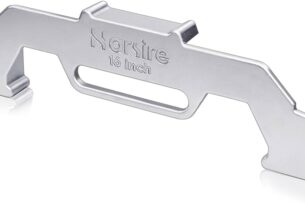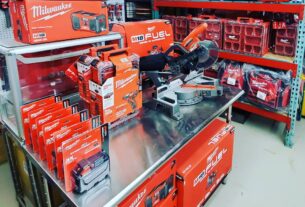Cross stitching is a beloved hobby that involves creating intricate designs by sewing together small, colorful stitches. Whether you’re just starting out or you’ve been cross stitching for years, having the right tools can make all the difference in the quality of your work and the enjoyment you get from the craft.
In this article, we’ll take a look at some of the best tools for cross stitching, including needles, fabric, floss, frames, and more. We’ll also offer tips on how to choose the right tools for your needs and budget, as well as advice on where to find them.
So grab your needle and thread and let’s get started!
Needles
One of the most important tools in any cross stitch kit is the needle. Without a good needle, it can be difficult to create even stitches or work with delicate fabrics. There are several types of needles available for cross stitching, each with its own unique features and benefits.
– Tapestry needles: These are perhaps the most commonly used type of needle for cross stitching. They have a large eye that makes it easy to thread floss through multiple times, and their blunt tip helps prevent snags or damage to delicate fabrics.
– Chenille needles: These needles have a longer, sharper point than tapestry needles, which makes them ideal for working with thicker fabrics or yarns. However, they can be more difficult to use with delicate fabrics or intricate designs.
– Beading needles: As their name suggests, these needles are designed specifically for working with beads or other small embellishments in cross stitch designs. They are very thin and flexible, which allows them to pass through tiny openings without damaging the fabric.
When choosing a needle for your cross stitching project, consider factors such as the thickness of your fabric and floss, as well as the complexity of your design. It may also be helpful to try out a few different types of needles to see which one feels most comfortable and effective for your stitching style.
Fabric
The fabric you choose for your cross stitch project can have a big impact on the final result. There are several types of fabric available, each with its own texture, color, and stitch count.
– Aida cloth: This is perhaps the most common type of fabric used in cross stitching. It has a grid-like pattern that makes it easy to count stitches, and it comes in various colors and sizes. The stitch count refers to the number of stitches per inch of fabric; higher stitch counts create smaller stitches and more detailed designs.
– Evenweave: This type of fabric has an even weave, meaning that the threads are evenly spaced both horizontally and vertically. It can be made from cotton, linen, or other materials, and often has a smoother texture than Aida cloth.
– Hardanger: Hardanger is a type of evenweave fabric that has a distinctive openwork design. It is often used for creating lace-like designs in cross stitch projects.
When choosing a fabric for your cross stitch project, consider factors such as the complexity of your design, the thickness of your floss, and your personal preferences for texture and color.
Floss
Floss is the thread used to create the colorful stitches in cross stitch designs. There are hundreds of colors and shades available, allowing you to create intricate patterns with stunning detail.
– DMC floss: DMC is one of the most popular brands of floss for cross stitching. They offer a wide range of colors and shades, as well as metallics and variegated threads.
– Anchor floss: Anchor is another well-known brand that offers high-quality floss in a variety of colors and shades.
– Speciality threads: In addition to traditional cotton floss, there are many speciality threads available for cross stitching. These may include metallics, silks, or even glow-in-the-dark threads.
When choosing floss for your project, consider factors such as the color and shade of your design, the thickness of the thread, and any special effects you want to achieve (such as a metallic sheen or glow-in-the-dark effect).
Frames
Using a frame or hoop can make it easier to create even stitches and prevent fabric from puckering or wrinkling during stitching. There are several types of frames and hoops available for cross stitching.
– Embroidery hoops: These are perhaps the most common type of frame used in cross stitching. They consist of two wooden or plastic hoops that fit snugly together to hold the fabric taut while stitching. They come in various sizes and can be adjusted to fit different thicknesses of fabric.
– Scroll frames: Scroll frames consist of a long piece of wood or plastic with clamps at each end to hold the fabric in place. They allow you to easily adjust the tension on your fabric while stitching.
– Q-snaps: Q-snaps are a newer type of frame that consists of four interlocking plastic pieces that hold the fabric taut. They are lightweight and easy to use, but may not be suitable for all types of projects.
When choosing a frame or hoop for your cross stitch project, consider factors such as the size and shape of your design, the thickness of your fabric, and your personal preferences for ease of use.
Other Tools
In addition to these essential tools, there are several other items that can make cross stitching easier and more enjoyable. Some examples include:
– Scissors: A good pair of scissors is essential for cutting floss and trimming excess fabric. Look for scissors with pointed tips that allow you to snip thread close to your work without damaging it.
– Needle minder: A needle minder is a small magnetic device that holds your needle when you’re not using it. This can be especially helpful if you tend to lose track of your needle while stitching.
– Thread organizer: A thread organizer is a small box or container that allows you to sort and store your floss by color. This can make it easier to find the colors you need for your project and keep them organized.
– Magnifying glass: If you have trouble seeing small details or stitches, a magnifying glass can be very helpful. Look for one with a large lens and a comfortable handle.
Conclusion
Cross stitching is a rewarding and relaxing hobby that requires the right tools to get started. By investing in high-quality needles, fabric, floss, frames, and other accessories, you can create beautiful designs with ease and precision.
Remember to choose tools that are appropriate for your skill level and budget, and don’t be afraid to try out different products until you find the ones that work best for you. With these tips and tools in hand, you’ll be well on your way to creating stunning cross stitch projects that will bring joy and satisfaction for years to come.
Wiki Reference:
https://en.wikipedia.org/wiki/Cross-stitch
https://www.dmc.com/us/
https://www.anchorcrafts.com/en
https://www.thesprucecrafts.com/cross-stitch-fabric-types-984645
https://www.craftsy.com/post/different-cross-stitch-tools/




